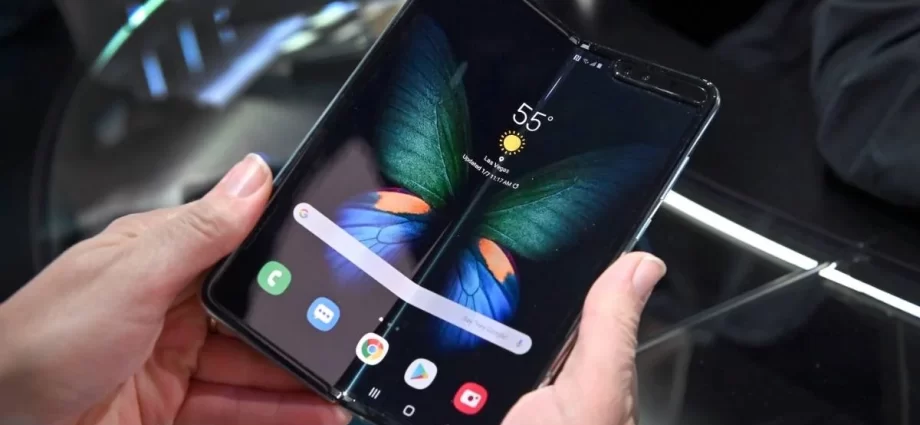Foldable Phones such as the Royole FlexPai were an innovative addition to smartphone technology, yet had durability issues and were more costly than similar offerings from Samsung and Huawei. Over time though, Foldable Phones gained momentum.
Foldable Phones have made some progress, such as more manageable hinges and apps that adapt to two-screen formats, but their cost continues to prevent widespread adoption.
Samsung’s Galaxy Fold
Samsung’s Galaxy Fold is a revolutionary in the smartphone space, boasting a revolutionary foldable design that opens like a book to reveal an expansive main screen that functions similar to an Android tablet. Light and compact at just 253 grams without compromising performance or portability, its design marks it out as an unprecedented technological marvel.
The Galaxy Fold’s main display supports multi-window multitasking and can be expanded to create a virtual split-screen for simultaneous work on two applications. Furthermore, its App Continuity feature ensures apps on its cover screen instantly scale to the larger folding display upon opening it.
S Pen support further adds to its versatility, making taking notes easier and drawing simpler. Though slightly heavier and more costly than its slab-style predecessors, the Galaxy Fold is an innovative device that opens new possibilities in mobile technology. And despite criticisms directed towards Samsung’s One UI skin, it remains fast and responsive in day-to-day tasks and gaming sessions.
Oppo’s Find N3
The Find N3 is an impressive foldable phone that features both an ordinary outer display and an expansive tablet-sized inner screen when folded. Furthermore, its unique hinge offers better pressure management than that found on Samsung Z Fold.
The inner screen features a 6.31-inch Super AMOLED display powered by low-temperature polycrystalline oxide technology to produce bright and contrast levels of over 1,000:1. For protection from drops and other physical damage, an outer cover display features more square 20:9 aspect ratio displays protected with Schott UTG glass; making these resilient displays.
Oppo’s Find N3 comes equipped with Android 13 and their ColorOS 13.2, both of which take full advantage of its extra screen space on the interior of the phone. Features like an app grid with an enhanced layout that enables more apps to take up screen real estate; additionally, an alert slider is featured, similar to what can be found on other OnePlus phones.
Xiaomi’s Mix Fold 3
Xiaomi’s foldable flagship offers cutting-edge features in an attractive and compact package, such as its top-of-the-line cameras, fast wireless and wired charging speeds, stunning displays, durable hinge mechanism and extended battery life.
Qualcomm’s latest Snapdragon 8 Gen 2 processor provides outstanding performance. As one of the most advanced mobile processors on the market, this chip easily handles demanding apps and games without issue.
The outer display is a 6.56-inch AMOLED that maximizes screen real estate. It’s bright, crisp and offers 120Hz refresh rate for a smooth user experience; plus HDR and Dolby Vision compatibility!
Xiaomi’s 8.3-inch OLED inner display boasts a split view that lets you use two apps at the same time, along with AI features like real-time translation and travel assistant which provides recommendations for restaurants and attractions. Furthermore, there are four cameras to choose from including 50MP main camera, 12 MP wide-angle camera and periscope-style telephoto lens for photography needs.
Google’s Pixel Fold
Google’s first foldable phone, the Pixel Fold, is an outstanding example of its class in terms of design. Folded flat enough for pocket use and feeling less like an over-the-top gimmick than Samsung’s Z Fold 4, its internal screen provides enough screen real estate that users can also use it as a tablet while its cameras offer top performance.
The Pixel Fold is designed for strong water resistance and multitasking ease, and Google has optimized many of its apps for the larger inner display – though whether third-party app developers will follow suit before there’s enough folding phones on the market is yet unknown.
Reddit has become a virtual minefield of stories from early adopters of Google’s Pixel Fold, who claim that its internal display cracks with just light use. Google must address this serious problem before being seen as the leader in foldable smartphones.

